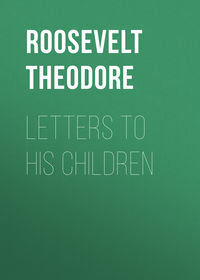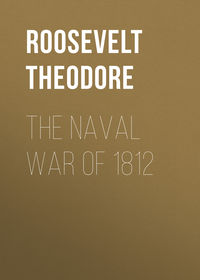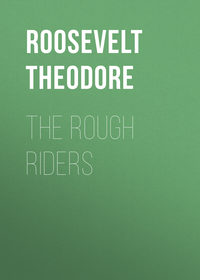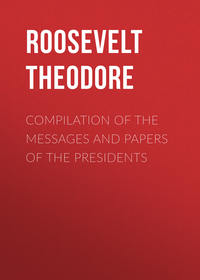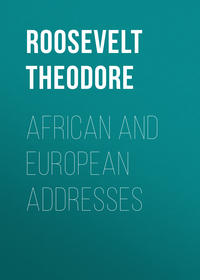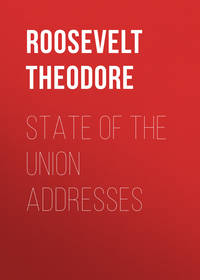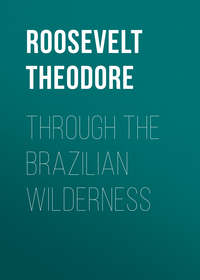 полная версия
полная версияThe Winning of the West, Volume 1
Which they reached on the 20th.
192
On the 22d.
193
On May 13th.
194
There were quarrels among the surveyors. The entry for May 13th runs: "Our company divided, eleven men went up to Harrad's company one hundred miles up the Cantucky or Louisa river (n.b. one Capt. Harrad has been there many months building a kind of Town &c) in order to make improvements. This day a quarrel arose between Mr. Lee and Mr. Hyte; Lee cut a Stick and gave Hyte a Whiping with it, upon which Mr. Floyd demanded the King's Peace which stopt it sooner that it would have ended if he had not been there."
195
They said that in a skirmish the whites had killed thirteen Shawnees, two Mingos, and one Delaware (this may or may not mean the massacres by Cresap and Greathouse; see, post, chapter on Lord Dunmore's War).
196
Where the journal says the land "is like a paradise, it is so good and beautiful."
197
The journal for July 8th says: "The Land is so good that I cannot give it its due Praise. The undergrowth is Clover, Pea-vine, Cane & Nettles; intermingled with Rich Weed. It's timber is Honey Locust, Black Walnut, Sugar Tree, Hickory, Iron-Wood, Hoop Wood, Mulberry, Ash and Elm and some Oak." And later it dwells on the high limestone cliffs facing the river on both sides.
198
On July 25th.
199
I have given the account of Floyd's journey at some length as illustrating the experience of a typical party of surveyors. The journal has never hitherto been alluded to, and my getting hold of it was almost accidental.
There were three different kinds of explorers. Boon represents the hunters; the McAfees represent the would-be settlers; and Floyd's party the surveyors who mapped out the land for owners of land grants. In 1774, there were parties of each kind in Kentucky. Floyd's experience shows that these parties were continually meeting others and splitting up; he started out with eight men, at one time was in a body with thirty-seven, and returned home with four.
The journal is written in a singularly clear and legible hand, evidently by a man of good education.
200
The latter, from his name presumably of Sclavonic ancestry, came originally from New York, always a centre of mixed nationalities. He founded a most respectable family, some of whom have changed their name to Sandusky; but there seems to be no justification for their claim that they gave Sandusky its name, for this is almost certainly a corruption of its old Algonquin title. "American Pioneer" (Cincinnati, 1843), II., p. 325.
201
Then called the Cherokee.
202
Volumes could be filled—and indeed it is hardly too much to say, have been filled—with worthless "proofs" of the ownership of Iroquois, Shawnees, or Cherokees, as the case might be. In truth, it would probably have been difficult to get any two members of the same tribe to have pointed out with precision the tribal limits. Each tribe's country was elastic, for it included all lands from which it was deemed possible to drive out the possessors. In 1773 the various parties of Long Hunters had just the same right to the whole of the territory in question that the Indians themselves had.
203
Campbell MSS.
"The first settlers on Holston River were a remarkable race of people for their intelligence, enterprise, and hardy adventure. The greater portion of them had emigrated from the counties of Botetourt, Augusta, and Frederick, and others along the same valley, and from the upper counties of Maryland and Pennsylvania were mostly descendants of Irish stock, and generally where they had any religious opinions, were Presbyterians. A very large proportion were religious, and many were members of the church. There were some families, however, and amongst the most wealthy, that were extremely wild and dissipated in their habits.
"The first clergyman that came among them was the Rev. Charles Cummings, an Irishman by birth but educated in Pennsylvania. This gentleman was one of the first settlers, defended his domicile for years with his rifle in hand, and built his first meeting house on the very spot where he and two or three neighbors and one of his servants had had a severe skirmish with the Indians, in which one of his party was killed and another wounded. Here he preached to a very large and most respectable congregation for twenty or thirty years. He was a zealous whig and contributed much to kindle the patriotic fire which blazed forth among these people in the revolutionary struggle.
"This is from a MS sketch of the Holston Pioneers by the Hon. David Campbell, a son of one of the first settlers. The Campbell family, of Presbyterian Irish stock, first came to Pennsylvania, and drifted south. In the revolutionary war it produced good soldiers and commanders, such as William and Arthur Campbell. The Campbells intermarried with the Prestons, Breckenridges and other historic families, and their blood now runs in the veins of many of the noted men of the States south of the Potomac and Ohio.
204
The first settlers on the Watauga included both Virginians (as "Captain" William Bean, whose child was the first born in what is now Tennessee, Ramsey, 94) and Carolinians (Haywood, 37). But many of these Carolina hill people were, like Boon and Henderson, members of families who had drifted down from the north. The position of the Presbyterian churches in all this western hill country shows the origin of that portion of the people which gave the tone to the rest, and, as we have already seen, while some of the Presbyterians penetrated to the hills from Charleston, most came down from the north. The Presbyterian blood was, of course, Irish or Scotch, and the numerous English from the coast regions also mingled with the two former kindred stocks, and adopted their faith. The Huguenots, Hollanders, and many of the Germans being of Calvinistic creed, readily assimilated themselves to the Presbyterians. The absence of Episcopacy on the western border, while in part indicating merely the lack of religion in the backwoods, and the natural growth of dissent in such a society, also indicates that the people were not of pure English descent, and were of different stock from those east of them.
205
Campbell MSS.
206
For this settlement see especially "Civil and Political History of the State of Tennessee," John Haywood (Knoxville, 1823), p. 37; also "Annals of Tennessee," J. G. M. Ramsey (Charleston, 1853), p. 92, "History of Middle Tennessee," A. W. Putnam (Nashville, 1859), p. 21, the "Address" of the Hon. John Allison to the Tennessee Press Association (Nashville, 1887); and the "History of Tennessee," by James Phelan (Boston, 1888).
207
Now Abingdon.
208
It only went to Steep Rock.
209
November 5, 1768.
210
October 14, 1768, at Hard Labor, S. C., confirmed by the treaty of October 18, 1770, at Lockabar, S. C. Both of these treaties acknowledged the rights of the Cherokees to the major part of these northwestern hunting-grounds.
211
Anthony Bledson.
212
May 16, 1771.
213
It is said that the greatest proportion of the early settlers came from Wake County, N. C., as did Robertson; but many of them, like Robertson, were of Virginian birth; and the great majority were of the same stock as the Virginian and Pennsylvanian mountaineers. Of the five members of the "court" or governing committee of Watauga, three were of Virginian birth, one came from South Carolina, and the origin of the other is not specified. Ramsey, 107.
214
In Collins, II., 345, is an account of what may be termed a type family of these frontier barbarians. They were named Harpe; and there is something revoltingly bestial in the record of their crimes; of how they travelled through the country, the elder brother, Micajah Harpe, with two wives, the younger with only one; of the appalling number of murders they committed, for even small sums of money, of their unnatural proposal to kill all their children, so that they should not be hampered in their flight; of their life in the woods, like wild beasts, and the ignoble ferocity of their ends. Scarcely less sombre reading is the account of how they were hunted down, and of the wolfish eagerness the borderers showed to massacre the women and children as well as the men.
215
In "American Pioneers," II., 445, is a full description of the better sort of backwoods log-cabin.
216
Both were born in Virginia; Sevier in Rockingham County, September 23, 1745, and Robertson in Brunswick County, June 28, 1742.
217
Putnam, p. 21; who, however, is evidently in error in thinking he was accompanied by Boon, as the latter was then in Kentucky. A recent writer revives this error in another form, stating that Robertson accompanied Boon to the Watauga in 1769. Boon, however, left on his travels on May 1, 1769, and in June was in Kentucky; whereas Putnam not only informs us definitely that Robertson went to the Watauga for the first time in 1770, but also mentions that when he went his eldest son was already born, and this event took place in June, 1769, so that it is certain Boon and Robertson were not together.
218
The description of his looks is taken from the statements of his descendants, and of the grandchildren of his contemporaries.
219
The importance of maize to the western settler is shown by the fact that in our tongue it has now monopolized the title of corn.
220
Putnam, p. 24, says it was after the battle of the Great Alamance, which took place May 16, 1771. An untrustworthy tradition says March.
221
In examining numerous original drafts of petitions and the like, signed by hundreds of the original settlers of Tennessee and Kentucky, I have been struck by the small proportion—not much over three or four per cent. at the outside—of men who made their mark instead of signing.
222
See, in the collection of the Tenn. Hist. Soc., at Nashville, the MS. notes containing an account of Sevier, given by one of the old settlers named Hillsman. Hillsman especially dwells on the skill with which Sevier could persuade the backwoodsmen to come round to his own way of thinking, while at the same time making them believe that they were acting on their own ideas, and adds—"whatever he had was at the service of his friends and for the promotion of the Sevier party, which sometimes embraced nearly all the population."
223
Mr. James Gilmore (Edmund Kirke), in his "John Sevier," makes some assertions, totally unbacked by proof, about his hero's alleged feats, when only a boy, in the wars between the Virginians and the Indians. He gives no dates, but can only refer to Pontiac's war. Sevier was then eighteen years old, but nevertheless is portrayed, among other things, as leading "a hundred hardy borderers" into the Indian country, burning their villages and "often defeating bodies of five times his own numbers." These statements are supported by no better authority than traditions gathered a century and a quarter after the event and must be dismissed as mere fable. They show a total and rather amusing ignorance not only of the conditions of Indian warfare, but also of the history of the particular contest referred to. Mr. Gilmore forgets that we have numerous histories of the war in which Sevier is supposed to have distinguished himself, and that in not one of them is there a syllable hinting at what he says. Neither Sevier nor any one else ever with a hundred men defeated "five times his number" of northwestern Indians in the woods, and during Sevier's life in Virginia, the only defeat ever suffered by such a body of Indians was at Bushy Run, when Bouquet gained a hard-fought victory. After the end of Pontiac's war there was no expedition of importance undertaken by Virginians against the Indians until 1774, and of Pontiac's war itself we have full knowledge. Sevier was neither leader nor participant in any such marvellous feats as Mr. Gilmore describes, on the contrary, the skirmishes in which he may have been engaged were of such small importance that no record remains concerning them. Had Sevier done any such deeds all the colonies would have rung with his exploits, instead of their remaining utterly unknown for a hundred and twenty-five years. It is extraordinary that any author should be willing to put his name to such reckless misstatements, in what purports to be a history and not a book of fiction.
224
The Watauga settlers and those of Carter's Valley were the first to organize; the Nolichucky people came in later.
225
Putnam, 30.
226
The original articles of the Watauga Association have been lost, and no copies are extant. All we know of the matter is derived from Haywood, Ramsey, and Putnam, three historians to whose praiseworthy industry Tennessee owes as much as Kentucky does to Marshall, Butler, and Collins. Ramsey, by the way, chooses rather inappropriate adjectives when he calls the government "paternal and patriarchal."
227
A very good account of this government is given in Allison's Address, pp. 5-8, and from it the following examples are taken.
228
A right the exercise of which is of course susceptible to great abuse, but, nevertheless, is often absolutely necessary to the well-being of a frontier community. In almost every case where I have personally known it exercised, the character of the individual ordered off justified the act.
229
Allison's Address.
230
Ramsey, log. Putnam says 36 degrees 35'.
231
Alexander Cameron.
232
Haywood, 43.
233
Meanwhile Carter's Valley, then believed to lie in Virginia, had been settled by Virginians; the Indians robbed a trader's store, and indemnified the owners by giving them land, at the treaty of Sycamore Shoals. This land was leased in job lots to settlers, who, however, kept possession without paying when they found it lay in North Carolina.
234
A similar but separate lease was made by the settlers on the Nolichucky, who acquired a beautiful and fertile valley in exchange for the merchandize carried on the back of a single pack-horse. Among the whites themselves transfers of land were made in very simple forms, and conveyed not the fee simple but merely the grantor's claim.
235
Haywood says they were named Crabtree; Putnam hints that they had lost a brother when Boon's party was attacked and his son killed; but the attack on Boon did not take place till over a year after this time.
236
Even La Rochefoucauld-Liancourt (8, 95), who loathed the backwoodsmen—few polished Europeans being able to see any but the repulsive side of frontier character, a side certainly very often prominent,—also speaks of the tendency of the worst Indians to go to the frontier to rob and murder.
237
Salem Church was founded (Allison, 8) in 1777, by Samuel Doak, a Princeton graduate, and a man of sound learning, who also at the same time started Washington College, the first real institution of learning south of the Alleghanies.
238
"Annals of Augusta," 21.
239
See Appendix.
240
"American Archives," 4th series, Vol. I., p. 454. Report of Penn. Commissioners, June 27, 1774.
241
Maryland was also involved, along her western frontier, in border difficulties with her neighbors; the first we hear of the Cresap family is their having engaged in a real skirmish with the Pennsylvanian authorities. See also "Am. Arch.," IV., Vol. I., 547.
242
"Am. Arch.," IV., Vol. I., 394, 449, 469, etc. He was generally called Dr. Conolly.
243
See do., 463, 471, etc., especially St. Clair's letters, passim.
244
In most of the original treaties, "talks," etc., preserved in the Archives of the State Department, where the translation is exact, the word "Big Knife" is used.
245
Letter of John Penn, June 28, 1774. "Am. Arch.," IV., Vol. IV.
246
"Am. Archives," do., 465.
247
Do., 722.
248
Do., 872.
249
"Am. Arch.," IV., Vol. I., p. 1015.
250
McAfee MSS. This is the point especially insisted on by Cornstalk in his speech to the adventurers in 1773; he would fight before seeing the whites drive off the game.
251
In the McAfee MSS., as already quoted, there is an account of the Shawnee war party, whom the McAfees encountered in 1773 returning from a successful horse-stealing expedition.
252
"Am. Archives," IV., Vol. I., 872. Dunmore in his speech enumerates 19 men, women, and children who had been killed by the Indians in 1771, '72, and '73, and these were but a small fraction of the whole. "This was before a drop of Shawnee blood was shed."
253
"Trans-Alleghany Pioneers," p. 262, gives an example that happened in 1772.
254
"Am. Archives," IV., Vol. I. Letter of Col. Wm. Preston, Aug. 13, 1774.
255
Many local historians, including Brantz Mayer (Logan and Cresap, p. 85), ascribe to the earl treacherous motives. Brantz Mayer puts it thus: "It was probably Lord Dunmore's desire to incite a war which would arouse and band the savages of the west, so that in the anticipated struggle with the united colonies the British home-interest might ultimately avail itself of these children of the forest as ferocious and formidable allies in the onslaught on the Americans." This is much too futile a theory to need serious discussion. The war was of the greatest advantage to the American cause; for it kept the northwestern Indians off our hands for the first two years of the Revolutionary struggle; and had Lord Dunmore been the far-seeing and malignant being that this theory supposes, it would have been impossible for him not also to foresee that such a result was absolutely inevitable. There is no reason whatever to suppose that he was not doing his best for the Virginians; he deserved their gratitude; and he got it for the time being. The accusations of treachery against him were afterthoughts, and must be set down to mere vulgar rancor, unless, at least, some faint shadow of proof is advanced. When the Revolutionary war broke out, however, the earl, undoubtedly, like so many other British officials, advocated the most outrageous measures to put down the insurgent colonists.
256
See Brantz Mayer, p. 86, for a very proper attack on those historians who stigmatize as land-jobbers and speculators the perfectly honest settlers, whose encroachments on the Indian hunting-grounds were so bitterly resented by the savages. Such attacks are mere pieces of sentimental injustice. The settlers were perfectly right in feeling that they had a right to settle on the vast stretches of unoccupied ground, however wrong some of their individual deeds may have been. But Mayer, following Jacob's "Life of Cresap," undoubtedly paints his hero in altogether too bright colors.
257
Sappington, Tomlinson, and Baker were the names of three of his fellow miscreants. See Jefferson MSS.
258
At Greenbriar. See "Narrative of Captain John Stewart," an actor in the war.—Magazine of American History, Vol. I., p. 671.
259
Loudon's "Indian Narratives," II., p. 223.
260
See "American Pioneer," I., p. 189.
261
Letter of George Rogers Clark, June 17. 1798. In Jefferson MSS., 5th Series, Vol. I. (preserved in Archives of State Department at Washington)
262
Witness the testimony of one of the most gallant Indian fighters of the border, who was in Wheeling at the time; letter of Col. Ebenezer Zane, February 4, 1800, in Jefferson MSS.
263
Jefferson MSS. Deposition of John Gibson, April 4, 1800.
264
Do. Deposition of Wm. Huston, April 19, 1798; also depositions of Samuel McKee, etc.
265
"Am. Archives," IV., Vol. I., p. 468. Letter of Devereux Smith June 10, 1774, Gibson's letter, Also Jefferson MSS.
266
Historical Magazine, I., p. 168. Born in Albemarle County, Va., November 19, 1752.
267
Military Journal of Major Ebenezer Denny, with an introductory memoir by William H. Denny (Publication of the Hist. Soc. of Penn.), Phil., 1860, p. 216
268
The Cresap apologists, including even Brantz Mayer, dwell on Cresap's nobleness in not massacring Logan's family! It was certainly to his credit that he did not do so, but it does not speak very well for him that he should even have entertained the thought. He was doubtless, on the whole, a brave, good-hearted man—quite as good as the average borderer; but nevertheless apt to be drawn into deeds that were the reverse of creditable. Mayer's book has merit; but he certainly paints Logan too black and Cresap too white, and (see Appendix) is utterly wrong as to Logan's speech. He is right in recognizing the fact that in the war, as a whole, justice was on the side of the frontiersmen.
269
Devereux Smith's letter. Some of the evil-doers afterwards tried to palliate their misdeeds by stating that Logan's brother, when drunk, insulted a white man, and that the other Indians were at the time on the point of executing an attack upon them. The last statement is self-evidently false; for had such been the case, the Indians would, of course, never have let some of their women and children put themselves in the power of the whites, and get helplessly drunk; and, anyhow, the allegations of such brutal and cowardly murderers are entirely unworthy of acceptance, unless backed up by outside evidence.
270
Jefferson MSS., 5th Series, Vol. I. Heckewelder's letter.
271
Jefferson MSS. Deposition of Col. James Smith, May 25, 1798.
272
Do., Heckewelder's letter.
273
"Am. Archives," IV., Vol. I., p. 475.
274
Do., p. 1015.
275
Do., p. 475.
276
Do., p. 418.
277
Do., p. 774. Letter of the Earl of Dartmouth, Sept. 10, 1774. A sufficient answer, by the way, to the absurd charge that Dunmore brought on the war in consequence of some mysterious plan of the Home Government to embroil the Americans with the savages. It is not at all improbable that the Crown advisers were not particularly displeased at seeing the attention of the Americans distracted by a war with the Indians; but this is the utmost that can be alleged.


